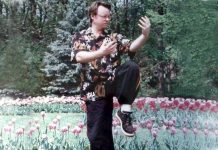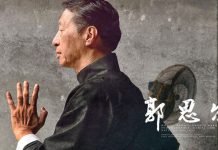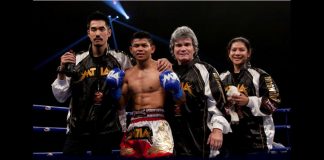“Balance is a necessary ingredient for optimal martial arts performance.”
Two masters of the system, Progressive Protective Systems (PPS), disagree with the above statement, at least in its normal context. Master Ho Soon Cheng a famous Penang Martial Arts Master and his disciple Master Geoff Bennett both renowned for their kicking skills, exhibit attributes such as speed, flexibility and timing which aid in kicking abilities. However they attribute much of the functionality in their kicking to their kicking method and partially in the minor, the off balance nature of their body mass. This together with other aspects of the dynamic PPS kicking system will be highlighted
Many styles particularly Japanese/ Okinawan and Southern Chinese Systems have an obsession with being balanced. The kicking system of PPS was adapted from the northern Shaolin leg method, the most famous kicking system in all of China of which Soon Cheng mastered.
Most styles want the centre of mass to lie above their supporting leg. The kicking method of PPS dictates that the centre of mass lies beyond the supporting leg towards the target. This causes a feeling of off balance and falling that most martial artists feel uneasy with. It is however, a feeling that Master Bennett promotes in his teaching often nudging students whilst kicking to ensure they correctly promote their centre of mass far enough. This is best exhibited by Master Bennett’s famous Three Inch Sidekick whereby he hold a side kick inches from an opponent. Master Bennett on the boundary of off balance performs a twitch function, which launches his full body mass into the target send it hurtling backwards.
Master Bennett Explain, ” by being ‘on balance’ a kickers mass is supported by the non kicking leg. Thus a stationary mass. “Using the method I endorse a kicker fully transfer’s his body mass into the opponent. This allows power to be generated from short distances.” This enables multiple kick functions to be performed with great power without full retraction of the limb allowing multiple functions on the opponent’s beat rhythm.
Also the method most people use to achieve this balance involves counter balancing the kicking leg by leaning backward. This throws the body’s inertia backward. Before it can move forward, the mass must pause before moving in the opposite direction (towards the opponent). This not only cause loss in the velocity of the body but also would cause the kick to be delivered a fraction out of beat, Timing is lost, which is crucial and could mean the difference between victory and disaster.
Many people have heard of the centerline theory used in Wing Chun. PPS kicking derives from the centreline. There are many reason for this:
- Uniformity of the travel path of the knee prior to chambering, disguising the kick. The sidekick, stomp kick, front kick hook kick and roundhouse kick derive from this same action.
- Protection of the groin during the primary stages of the kicking function
- Minimises the arc of the roundhouse kick making defense harder due to the smaller arc of the kick.
- Promotes adaptability of functions performed such that they may be changed according to the opponents reaction eg if the opponent motions to defend against a front kick, the kick may be modified to a roundhouse from the same initial function.
- Promotes dynamic knee lift resultant from the interaction of leg and abdominal muscle groups as opposed to leg chambering being a function of counterbalancing and leaning back.
Whilst flexibility in the limbs is important, flexibility moving through the different planes of the hips range of motion is paramount. Whilst most styles state that kicking power comes from the hips, this statement normally refers to torque generation. It is however the mobility and agility in the hips which allows proper bio-mechanical alignment and positive center of mass mobility, which is the source of speed and power in PPS’s kicking arsenal.
Master Bennett also stresses that utilization of hand and foot attacks in unison. Quite often when hands and feet are coordinated in combinations they are functioned on full beats or greater. “This is the major reason kicking is often dispelled as not being effective in actual combat”, states Master Bennett. To truly use kicks effectively they should be inserted within the beats of a hand combination on the half beat, or even on the quarter beat between checking and hand attacks.
Kicking is too often left in the domain of kicking range. Kicking however is very effective when done in closer ranges. This is because the opponent is often concentrating on the upper body and the kick originates under the opponent line of site. It is again very important the counter balancing is not utilized as this often telegraph kick attacks in closer ranges. Counter balancing dictates that the upper body moves backwards which is in the line of site of the opponent. This alerts the opponent to an impending foot attack.
Conclusion
Progressive Protection System incorporates a comprehensive kicking system utilizing the science of physics in its power generation and bio mechanics to derive methods to execute these powers generation methods with the combat context. Beat theory is as important in kicking as in other combat method, but however is often neglected leading to poor functionality in kicking. The principles of the PPS kicking system may be adopted by any other system to aid increased functionality and success.
About the author: Alvin Kan has been studying Martial Arts for 18 years starting with Judo, 6 Years with Master Michael Spinks Studying Jin Wu Koon Double Dragon Shaolin Gung Fu and the Past 11 Years with Master Geoff Bennett studying Progressive Protection Systems, which is based on the Five Ancestors Gung Fu System. Alvin also has investigated the arts of Brazillian Ju Jutsu, Kickboxing and Kali and currently teaches Progressive Protection Systems in the Hills District, North Western Sydney.
To Contact Alvin:
gbmai_hills@hotmail.com
Master Geoff Bennett: geoffreybennett@optusnet.com.au
Visit us at : Geoff Bennett Martial Arts International






